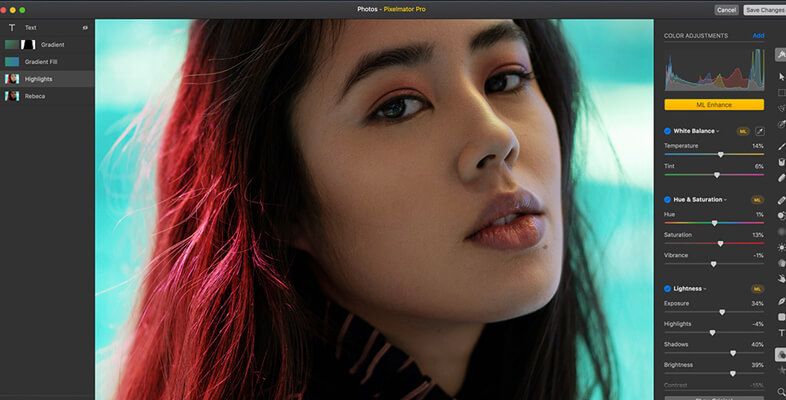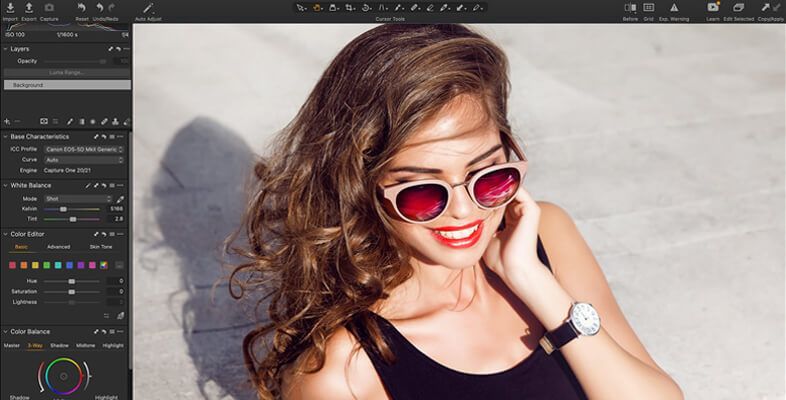Best Photography Editing Software
In the digital era, photography has become more accessible than ever. With the simple click of a button, anyone can capture moments to cherish for a lifetime. However, taking a photograph is only part of the art. The magic often lies in editing those images to bring out their true potential. In this blog post, we'll explore the best photography editing software available, catering to a variety of needs and preferences.
The Best Photo Editing Software Overall
When it comes to comprehensive photo editing, Adobe Photoshop reigns supreme. Its robust suite of tools allows for intricate edits, from basic color correction to advanced layering techniques. Photoshop is favored by professionals and hobbyists alike for its versatility and powerful features. However, it comes with a steep learning curve, which may pose a challenge for beginners.
For those seeking a more user-friendly experience, Adobe Lightroom offers an excellent alternative. It focuses primarily on photo organization and development, making it perfect for those who want to enhance their images without delving into complex editing techniques. The intuitive interface and non-destructive editing capabilities make it a popular choice.

The Best Photo Editing Software for AI
Artificial Intelligence (AI) has begun to transform the world of photo editing significantly. Software like Luminar AI utilizes AI technology to automate various editing tasks, from sky replacement to portrait retouching. This innovation allows both novice and professional photographers to enhance their images quickly and efficiently. The software's AI-driven tools not only save time but also ensure a professional finish with minimal effort.
Another notable option is Topaz Labs' suite of AI plugins, which specialize in specific editing functions like noise reduction and sharpening. These tools integrate seamlessly with other software, providing a powerful enhancement to traditional editing techniques.
The Best Premium Photo Editing Software
For photographers who are willing to invest in high-quality tools, Capture One Pro is often highlighted as the top choice. Its advanced raw processing capabilities, coupled with powerful color grading and tethering options, make it especially popular among professional studios and wedding photographers. Capture One Pro offers a level of detail and control that is simply unmatched, albeit at a premium price point.
Another premium option worth mentioning is Affinity Photo. It's a one-time purchase software that packs many features similar to Photoshop without the subscription model. Its competitive pricing and feature-rich environment make it attractive to serious photographers looking for advanced editing without ongoing costs.
The Best Budget Photo Editing Software
Not everyone can spend big bucks on photo editing software. Fortunately, there are several budget-friendly options that deliver excellent results. Programs such as GIMP and Paint.NET are widely used and provide powerful editing capabilities without a price tag.
GIMP, an open-source software, offers a vast array of tools and features comparable to its paid counterparts. It’s a great option for those willing to invest time learning its intricacies. Paint.NET is simpler and more intuitive, ideal for quick edits and basic enhancements.
The Best Photoshop Alternative Software
Adobe Photoshop is a household name, but it’s not the only player in town. Programs like Affinity Photo again come into play here, offering many of Photoshop's capabilities without the subscription fee. It’s an exceptional choice for those who desire a Photoshop-like experience at a lower cost.
Another noteworthy alternative is Corel PaintShop Pro, which provides a rich set of features tailored for both beginners and advanced users. It combines ease of use with powerful editing tools, making it a competitive option for those seeking alternatives to Photoshop.
The Best Photo Editing Software for Compatibility
If compatibility is a significant concern, then software solutions like Adobe Lightroom and Capture One Pro are engineered to work seamlessly with a variety of operating systems and devices. Both applications operate on Windows and Mac, ensuring that users can edit photos regardless of their hardware setup.
Additionally, software like Fotor and Pixlr offer online editing, which means users can access their photos from anywhere as long as they have an internet connection. Their universal compatibility makes them suitable for various workflows and devices.

The Best Raw Photo Editing Software
For photographers working with RAW images, software that specializes in processing these large file formats is essential. Adobe Camera RAW and Capture One Pro lead the pack, delivering advanced editing tools that allow for detailed adjustments without compromising image quality.
Both programs provide excellent exposure, color, and detail control, enabling photographers to extract the most from their RAW files. They support various camera manufacturers, ensuring broad compatibility with the latest photography equipment.
The Best Photo Editing Software for Portraiture
Editing portraits requires specific tools that can enhance skin tones, reduce blemishes, and create a polished final product. Software like Portraiture by Imagenomic and Adobe Lightroom features dedicated tools for retouching portraits quickly and effectively.
Portraiture boasts powerful skin smoothing and retouching features that can save you hours of editing time, while Lightroom allows for batch processing, making it easier for photographers to edit multiple images quickly.
The Best Free Photo Editing Software
For those on a tighter budget, free software options remain abundant. Software like Photopea and Canva provide essential editing features that any amateur photographer can utilize. They are less advanced than paid software but still offer necessary tools for basic enhancements.
While these programs may not deliver the comprehensive capabilities of premium software, they are perfect for beginners looking to dip their toes into photo editing.
The Best of the Rest
Beyond the leading names in photo editing, there are numerous other software options catering to niche needs. Programs like Snapseed and Pixlr X offer mobile-friendly editing solutions, ensuring that photographers can edit images on-the-go.
FAQs
Which Software Is Best for Photo Editing?
The best software depends on individual needs. Adobe Photoshop and Lightroom are often favored for their depth, while GIMP and Affinity Photo offer robust alternatives for budget-conscious users.
What Is the Easiest Software for Photo Editing?
Software like Canva and Fotor are known for their user-friendly interfaces, making them ideal for beginners.
Why Should I Edit My Photos?
Editing enhances the visual appeal, corrects imperfections, and allows for creative expression.
Do I Need to Use AI for Photo Editing?
AI can simplify editing tasks and improve efficiency, but it's not necessary for all users.
How to Choose the Best Photo-Editing Software?
Consider your editing needs, budget, and level of expertise to find the best software fit.
In conclusion, finding the best photography editing software is crucial for maximizing the potential of your images. Each software has unique features catering to different levels of expertise, editing needs, and budget constraints. Through careful consideration, you can select the perfect tool to polish your photos beautifully.

Or Get YourMoney Back
back your money in the rare case you are not satisfied with the quality of your
damage-free pictures. Only $38 for most image restorations regardless of damage

All rights reserved.